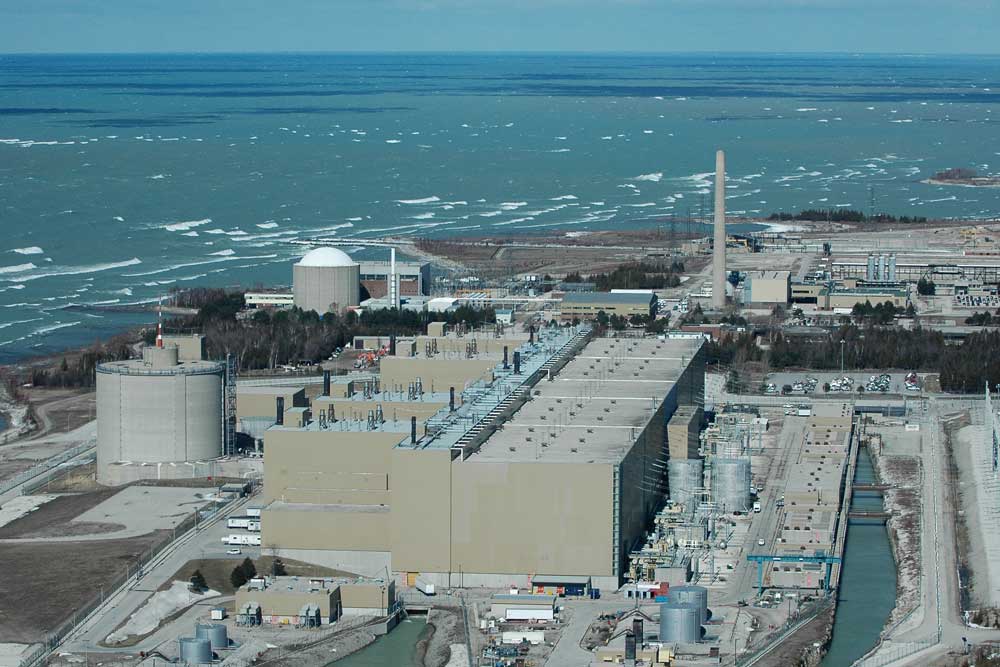Part 1 of 2 parts.
Canada currently has nineteen commercial nuclear power reactors in operation that produce thirteen and one- half gigawatts of electricity. This represents about sixteen percent of Canada’s electricity. In Ontario, Bruce Power operates the Bruce Nuclear Generating Station about two hundred and fifty miles north of Toronto. There are eight reactors running at Bruce which are producing six thousand and three hundred megawatts of electricity. This provides about sixty percent of the electricity for the province. Ontario Power Generation (OPG) which is owned by the provincial government in Ontario operates four power reactors at its Darlington Nuclear Generating Station on the north shore of Lake Ontario. The three thousand and five hundred megawatts generated by the station provides about twenty percent of the electricity for the province. And, finally, there is the Pickering Nuclear Generating Station on the north shore of Lake Ontario at in the town of Pickering. The station has six operating reactors generating about three gigawatts of power. This station supplies about twenty percent of the electricity for Ontario.
The Ontario Accountability Office (FAO) has just issued a new report titled An Assessment of the Financial Risks of the Nuclear Refurbishment Plan about the future of nuclear power in Ontario. The report discusses the distribution of risk among the ratepayers, the provincial government, Ontario Power Generation (OPG) and Bruce Power. The FAO estimates that the plan leads to the provision of a “significant proportion) of Ontario’s power needs during the period of 2016 to 2064 at an average cost of about sixty-three dollars and thirty cents per Megawatt hour.
The new plan will see the price for electricity from nuclear rise in the short term to pay for refurbishing. It is expected that the cost of nuclear electricity will rise to a peak in 2027. After that, the cost will fall slowly until to 2064. The estimated average cost cited above of sixty-three dollars and thirty cents is lower than the current average cost for electricity of ninety dollars and forty-five cents. The FAO investigated the financial risks of the refurbishment plant related to general cost overruns, station operating cost overruns, lower electricity demand and the possibility that lower cost and lower emissions alternative energy sources that may become available.
With respect to the refurbishment of the Bruce Power reactors, the ratepayers will bear the risk for cost increases up to twelve months before the work begins. At that time, the risk of refurbishment cost increases will be transferred to Bruce Power. On the other hand, the risk of cost increases that are “prudently incurred” for refurbishment of the OPG reactors at Darlington before work begins will be born by the ratepayers. Cost increases that are not “prudently incurred” will be borne by Ontario which owns OPG. Risk of cost increases can be relieved by the existence the option to cancel the refurbishment of a particular power reactor. This option is known as an “off-ramp.”
Most of the risk that the cost of refurbishing the Bruce Power reactors will be higher than expected is transferred to Bruce Power through its contracts with Ontario's Independent Electricity System Operator. If costs are lower than expected, the ratepayers receive fifty percent of the benefit. The ratepayers and the province through its ownership of OPG bear all the risks over costs of refurbishment being higher than expected but also bear the all benefit if the cost is lower than the estimate. The Ontario Energy Board provides oversight for the plan that protects the ratepayers.
Please read Part 2.
Bruce Nuclear Generating Station:
